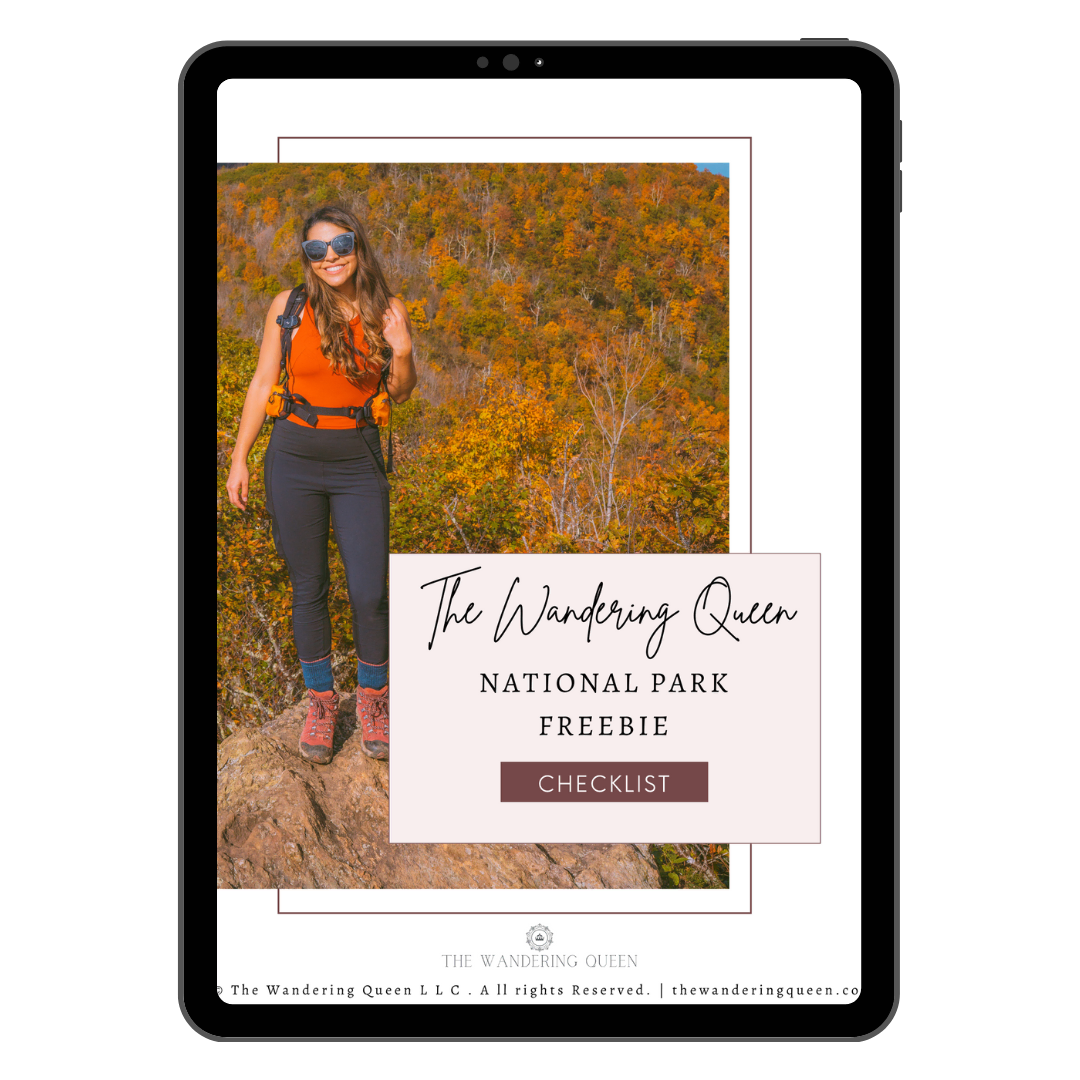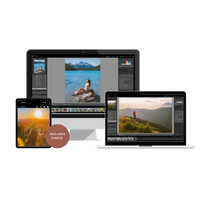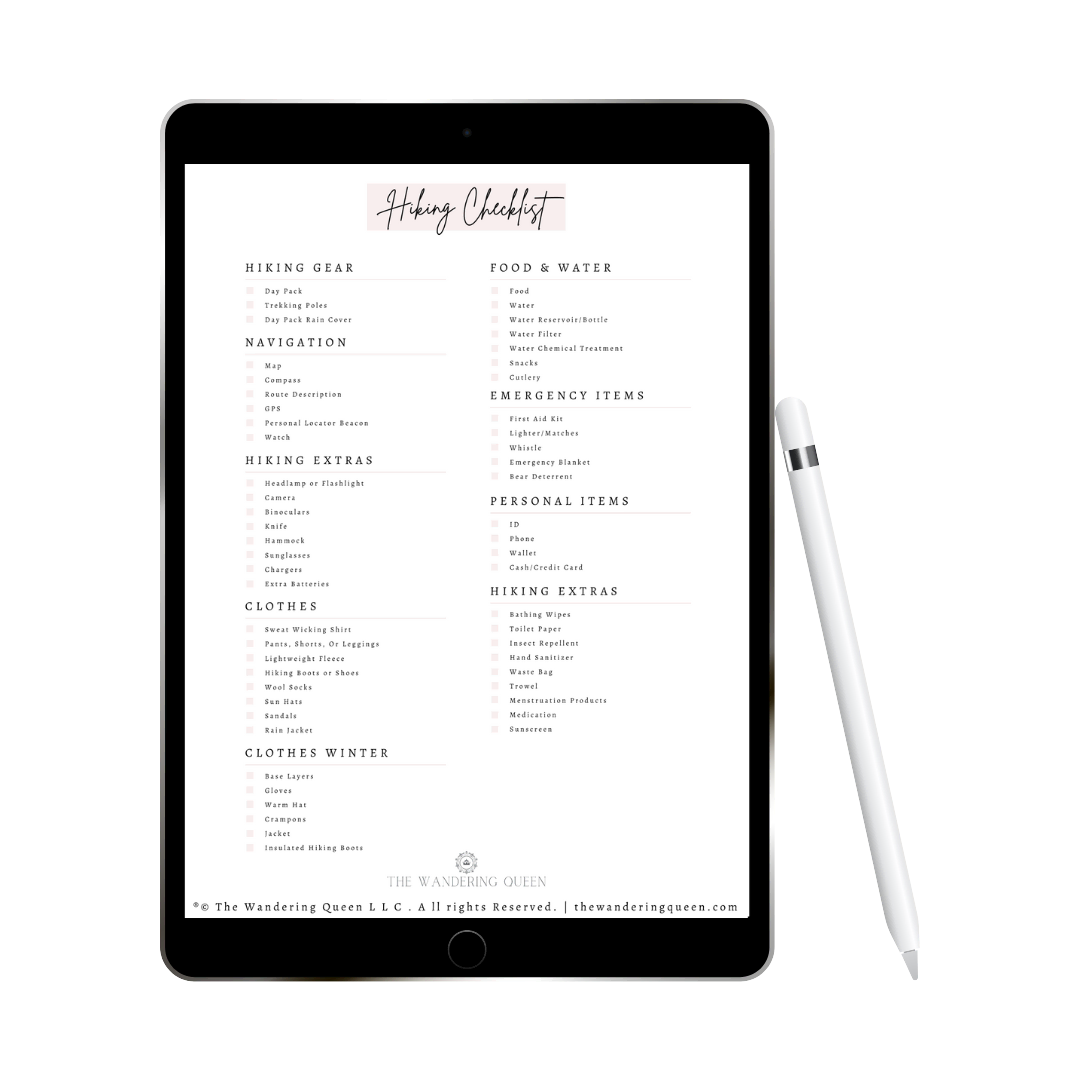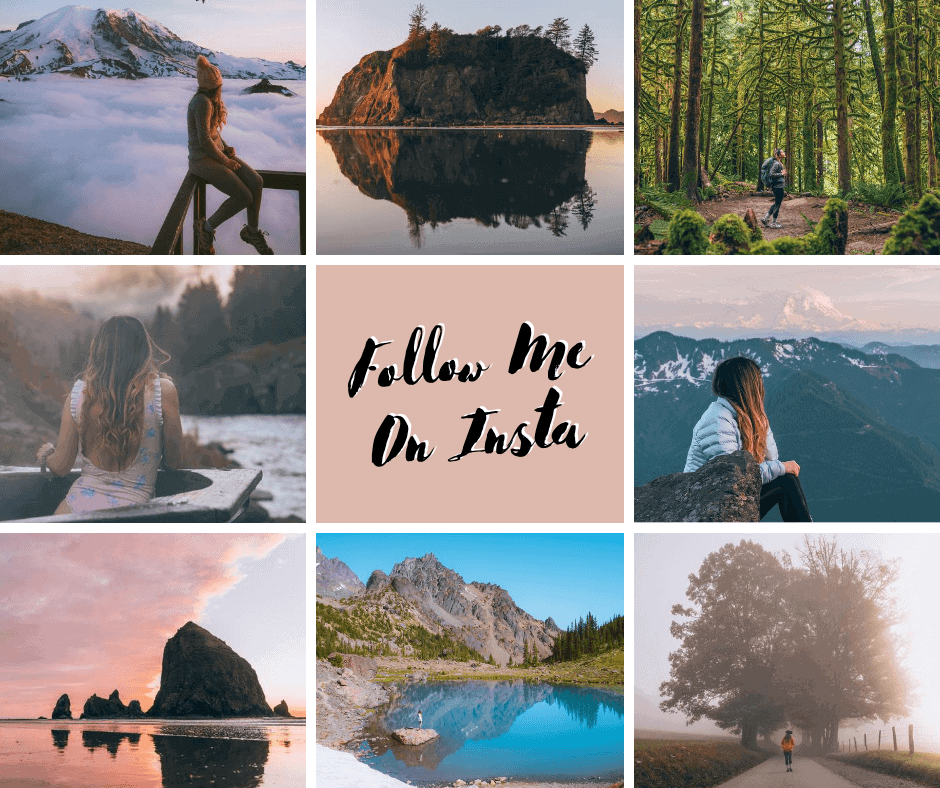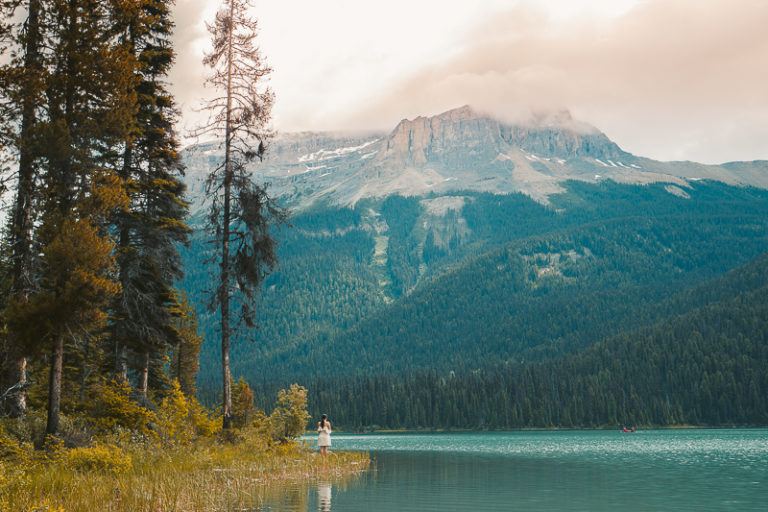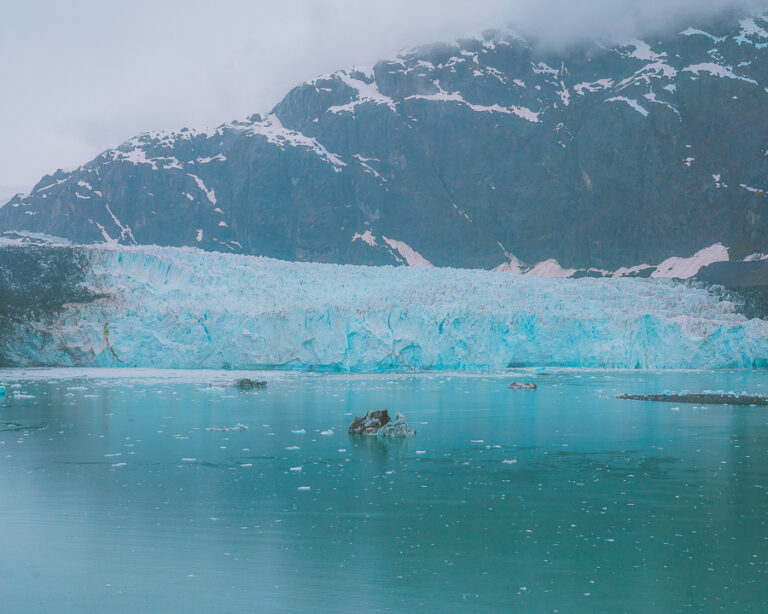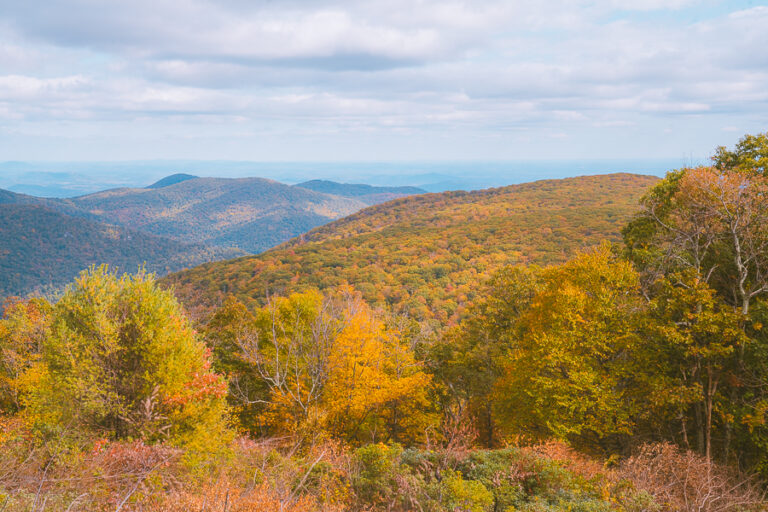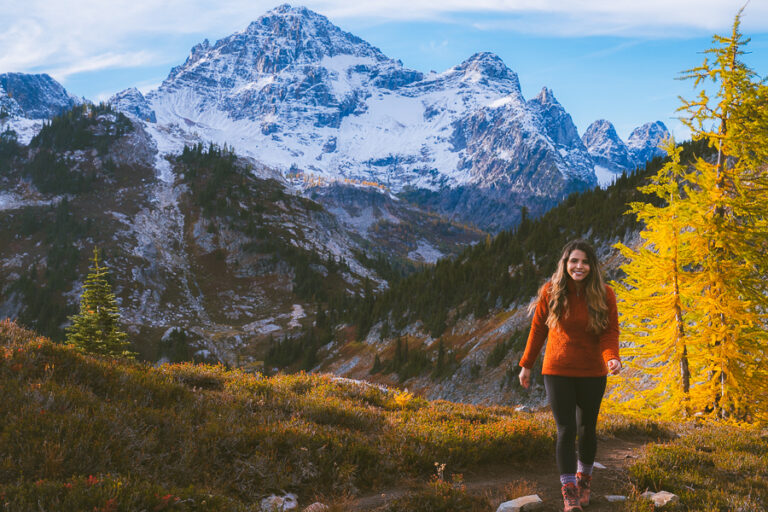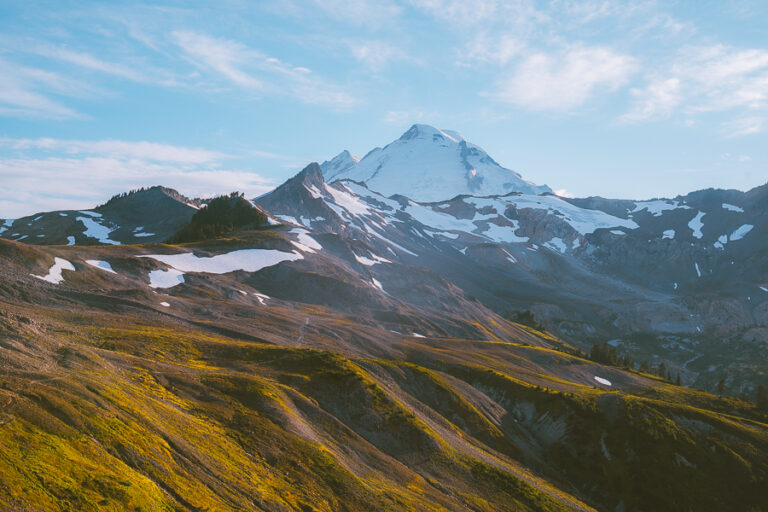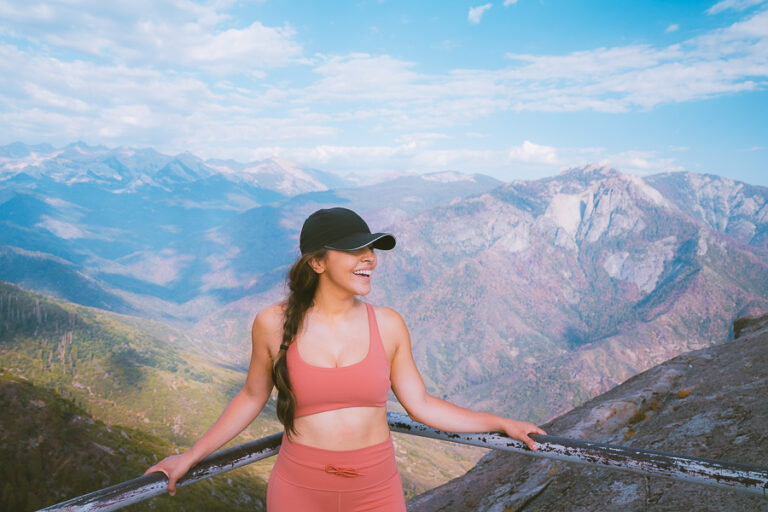Amazing 3-Day Itinerary for Glacier National Park | Top Trips Ideas
Organizing a trip to Montana or Big Sky Country and looking for the ideal Glacier National Park vacation? This guide will provide you with an in-depth look at all you need to know about the park, including where to go and when to visit.
Right on the border with Canada and Waterton Lakes National Park, Glacier National Park is a roughly 1,500-square-mile area in the Rocky Mountains, and boy, is it picturesque. There is so much to do in the wilderness, so it might be challenging to decide what to visit. Luckily for you, this Glacier National Park 3-day itinerary will cover all of the stunning highlights.
Visiting this nature reserve should definitely be on your national park checklist as it’s full of exciting hikes, mesmerizing natural beauty, and various wildlife spotting opportunities.
What are you waiting for? Let’s jump into the best itinerary for Glacier National Park!
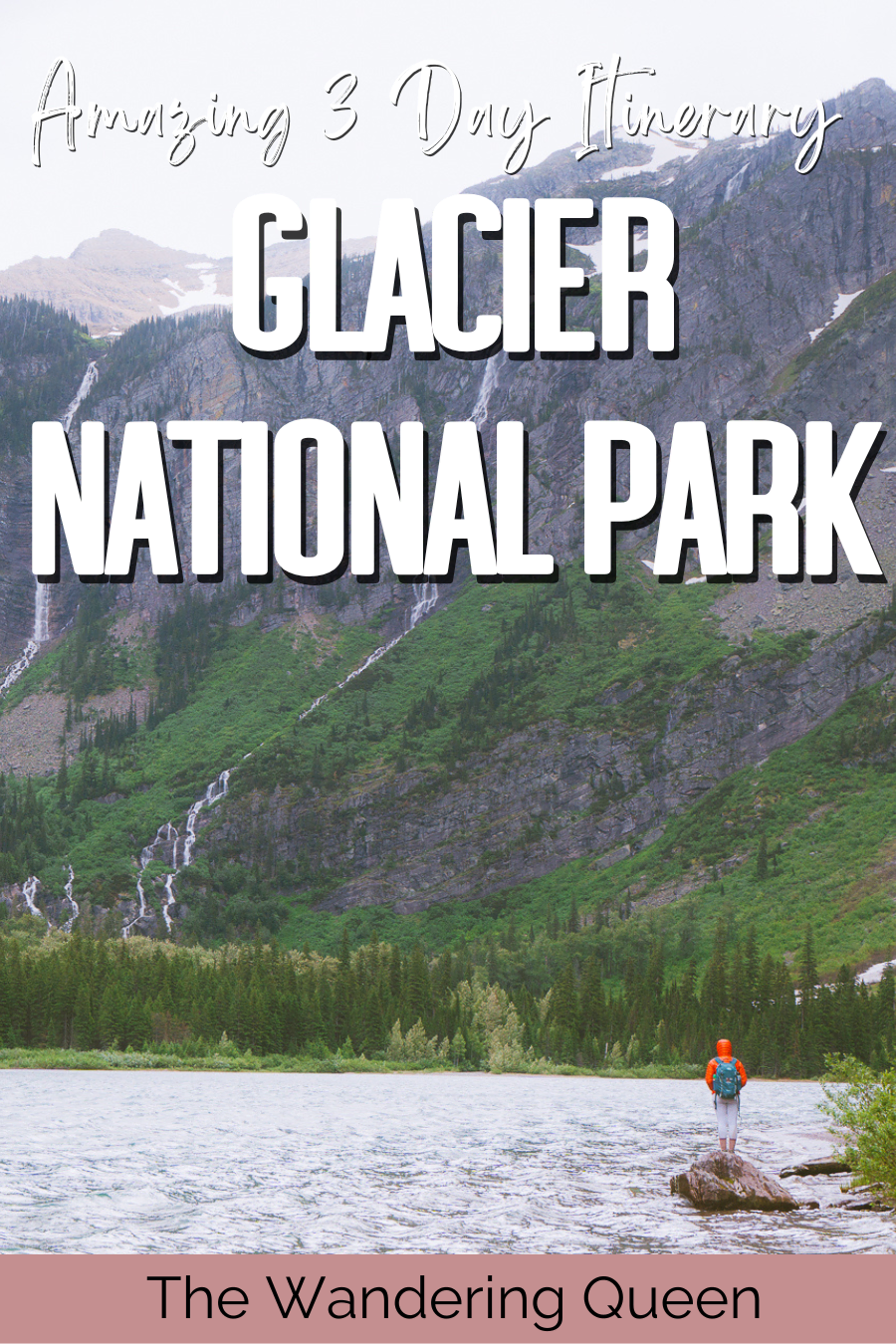
Disclosure: This post contains affiliate links. If you click one of them, I may receive a small commission (for which I am very grateful for) at no extra cost to you.
Glacier National Park
Related Posts
How to Get to Glacier National Park
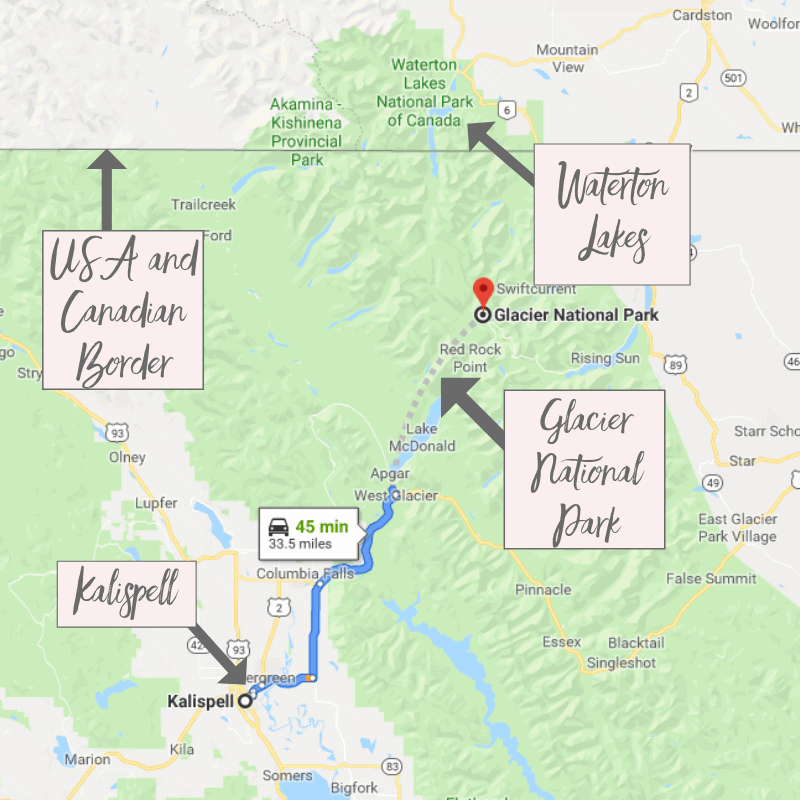
The closest airport to Glacier National Park is Glacier Park International Airport, which is around 25 miles from the West Glacier entrance. It will probably take you around 30 minutes to get here, and it is one of the most popular ways to get to this protected region.
If you’re driving to Glacier National Park from Helena, Montana’s capital, you’ll most likely drive along Highway 89 north to one of the three eastern entrances: St. Mary, Many Glacier, and Two Medicine. This drive will be roughly around 3 hours long.
Lastly, if you’re coming from Spokane, Washington – a popular road trip, you’ll take anywhere from 4 to 6 hours to drive, which can be a fun way to explore the American Northwest.
Map Of Glacier Itinerary
Tours Of Glacier National Park
Entering Glacier National Park
Making a trip to Glacier National Park isn’t as simple as just driving into the area and paying an entrance fee. That said, it doesn’t have to be too much of a challenge as long as you follow these tips.
To get to certain parts, such as the North Fork Area, Many Glacier, Two Medicine, and Going-to-the-Sun Road, you’ll need a vehicle reservation from late May until mid-September.
These are very cheap to buy, as they only require a $2 processing fee. You’ll have to book in advance to get a reservation, though. You’ll still be able to access these areas before 6 am and after 3 pm or via the free shuttle along the Going-to-the-Sun Road.
The majority of Glacier National Park can be accessed with the $35 per vehicle or $20 per person entrance fee. These are valid for seven days.

Top tip: If you’re planning to do a USA national park road trip, the America the Beautiful Pass is the ultimate money-saver. This pass offers you unlimited entry to all US national parks for an entire year and only costs $80. >>>Purchase your pass here
What To Wear When Hiking Glacier National Park
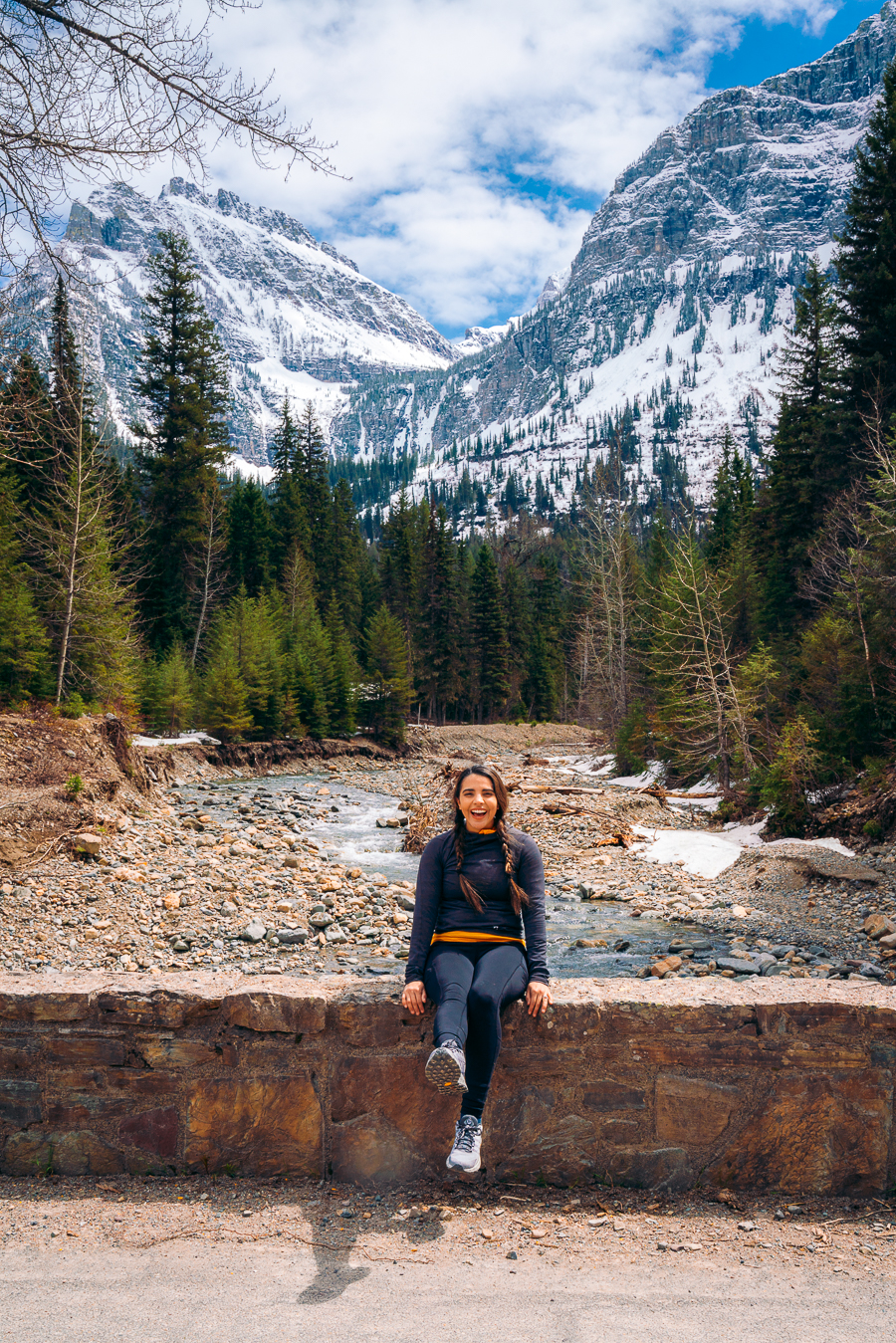
- Sunscreen: Super important, and it is part of the ten essentials! >Buy Sunscreen
- Chapstick: This one has SPF, so your lips won’t get burned! >Check Out This Chapstick
- Hiking Boots/Shoes: If you use tennis shoes, you can easily hurt your toes hitting a rock by accident (Trust me, I have done it so many times before). >Check Out My Hiking Shoes
- Hiking socks: Having the correct socks helps you prevent getting blisters. Smart Wool is probably my favorite brand out there. >Buy Hiking Socks
- Water Reservoir: Water reservoirs help prevent me from getting dehydrated while hiking. The great thing about this reservoir is that it doesn’t have the plastic taste. >Here Is My Water Reservoir
- Water: Stay nice and hydrated.
- Sunglasses: It can get sunny even in the fall, so make sure to pack some sunglasses. >Check Out These Sunglasses
- Snacks: The best snacks are jerky, nuts, and energy bars. Clif Bars are great for hiking
- Camera: The Sony A6000 was one of the first cameras I started traveling with. The Sony A6000 is an excellent camera for people that want to start improving at travel photography. >Buy Sony Camera Here
- First Aid Kit: This is one of the first things I bought when I first started going on adventures. It is super portable. >Buy This Awesome First Aid Kit Here
- Day Pack to carry all your things: To carry all your gear, water, and food, you need a good backpack. Osprey is known to have some of the best backpacks in the market. >Buy This Great Quality Backpack
- Headlamp: A headlamp is an absolute must in case you get stranded in the dark! It is a lot more portable and easier to use than a flashlight. >Buy A Headlamp Now
- Leggings or Hiking Pants: I always wear leggings while hiking because it is what I feel most comfortable with! >Click For My Favorite Hiking Leggings
- Breathable sweat-wicking shirts: Cotton shirts soak up your sweat when hiking, so make sure to wear something breathable. >Check out this awesome breathable shirt here.
- Mid Base Layer: If you are hiking in the Fall or Spring, this might be a great idea. >Check Out My Sweater Here
- Sports Bra: For women. >Check This One Here
- Jacket: I always have a jacket in my backpack, even if it is hot. I do it just in case of an emergency. >Buy My Favorite Jacket
- Rain Jacket: The worst feeling in the world is being wet and cold while hiking. You can get hypothermia, so always carry a poncho or a rain jacket when you hike Montana. >Check Out My Rain Jacket Here
- Tripod: This is an optional item, but it is excellent for getting the ideal sunset pictures. >Check out this tripod
- Knife: I always carry a knife in my backpack, just in case. >Check Out My Knife Here
- National Park Pass: I highly recommend getting a year-long America The Beautiful Pass so you can get into both parks with ease. >Get It Here
- Map And Trail Guide: Start planning your trip with this. >Buy One Here
Claim your FREE Hiking Checklist
Ready to start hiking? Grab my free hiking checklist and never forget anything at home!
Best Time to Visit Glacier National Park
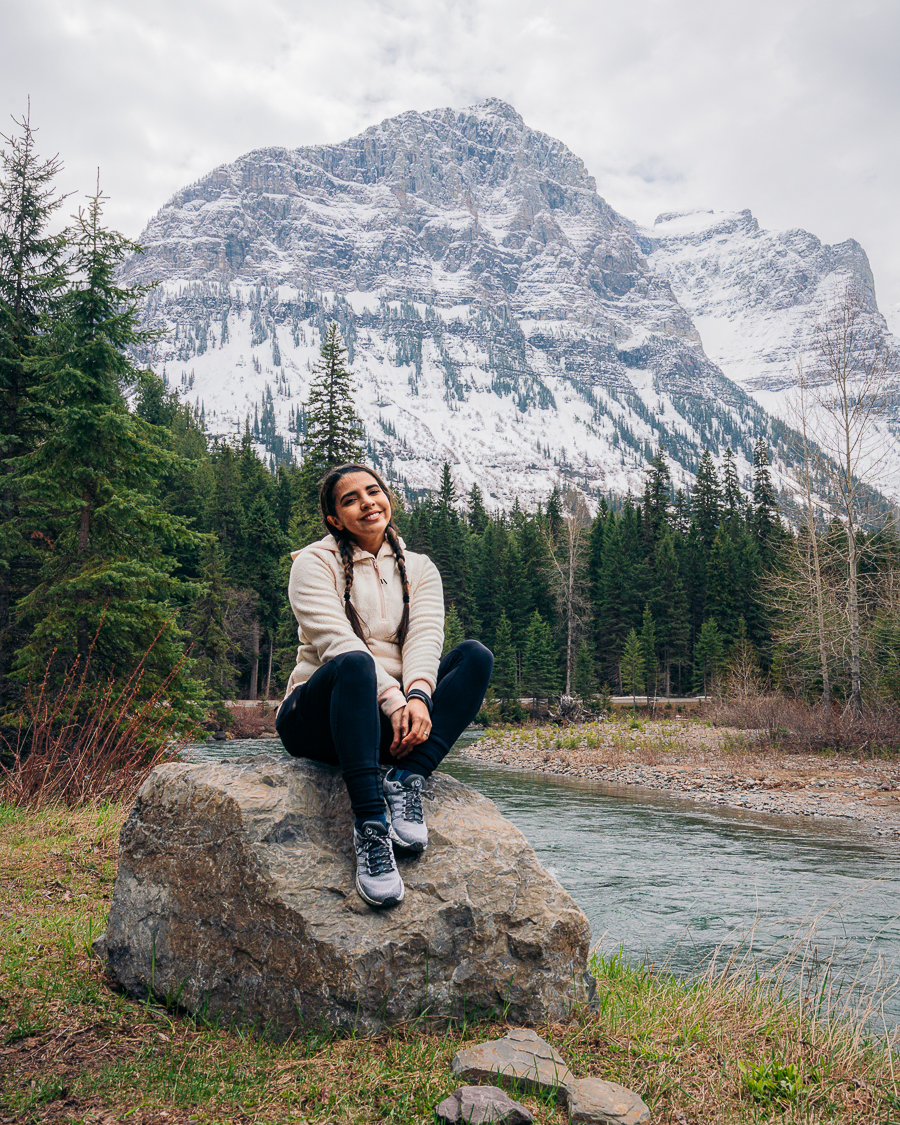
Wondering when’s best to visit Glacier National Park? The quick answer is between July and August, which has the best weather and good road conditions. However, that’s also the peak season for the reserve, so it’s bound to be packed.
Below is a more in-depth breakdown of each season in the park so you can get a better idea of when you’d like to travel to Glacier National Park.
Glacier National Park in Summer
June – August
Summer is the busiest time for a visit to Glacier National Park, as all its facilities are open – roads, hiking trails, visitor centers, and more. Plus, with temperatures in the mid-70s and 80s, it’s perfect for outdoor exploration.
With all this in mind, it’s no wonder it’s one of the best national parks to visit in summer.
Visiting Glacier National Park in the Fall
September – November
If you’re looking for the perfect time to witness Glacier National Park’s beauty at its peak, fall is terrific. With its striking fall foliage, more active wildlife, and fewer crowds, you get to experience Glacier National Park at a much cheaper rate.
Experience Glacier National Park in the Winter
December – February
If you’re ready to embrace the cold, winter has the fewest crowds – but tons of snow. It’s one of the best national parks to visit in winter, especially for experienced winter backpackers and cross-country skiers.
Beyond that, it’s also a fun place to try snowshoeing. You can rent snowshoes from the Apgar Visitor Center or even join a ranger-led snowshoe hike on most Saturdays.
Glacier National Park Weather in Spring
March – May
For a more laid-back visit, plan a Glacier National Park trip in spring. It might be a bit chillier than visiting in summer, but you’ll get to appreciate the park when it’s less busy. Just keep in mind that more facilities might be closed due to the snow.
3-Day Glacier National Park Itinerary
There are so many fun things to do in Glacier that you might not be sure what to fit in on your trip here. This Glacier National Park itinerary for 3 days covers the highlights of the park, including some of Glacier’s best hikes and top sights.
It’s up to you whether you follow this itinerary or select what you prefer. However, without further ado, here’s the best way to see Glacier National Park in 3 days.
Day 1: West Glacier
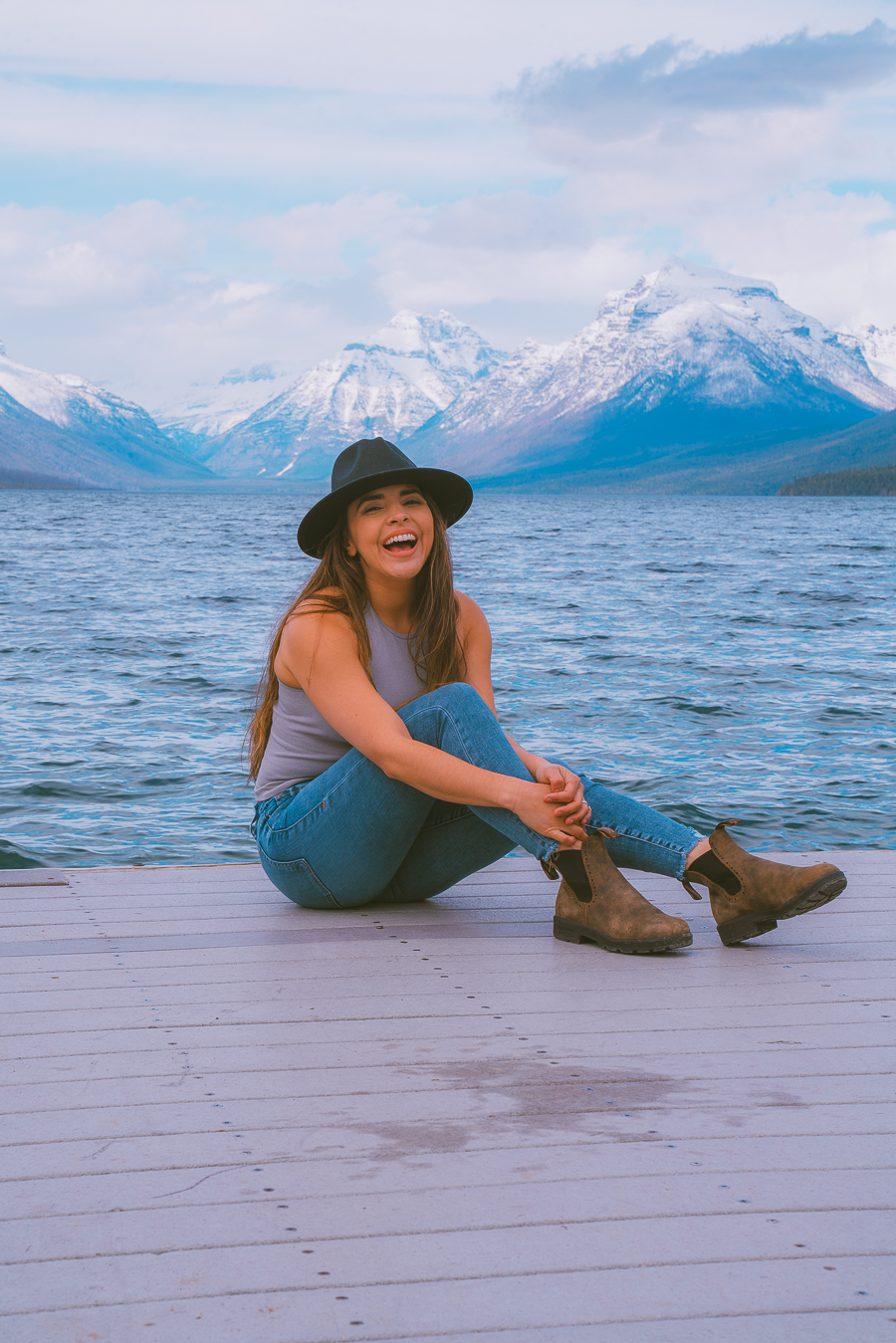
Start your first day bright and early to get the most out of your time here. If you come from the West entrance or in West Glacier, you’ll start with a drive along the Logan Pass – around 6:30 am – to avoid traffic. You’ll pass by stunning peaks and Lake McDonald on the Going-to-the-Sun Road.
Drive the Going-to-the-Sun Road
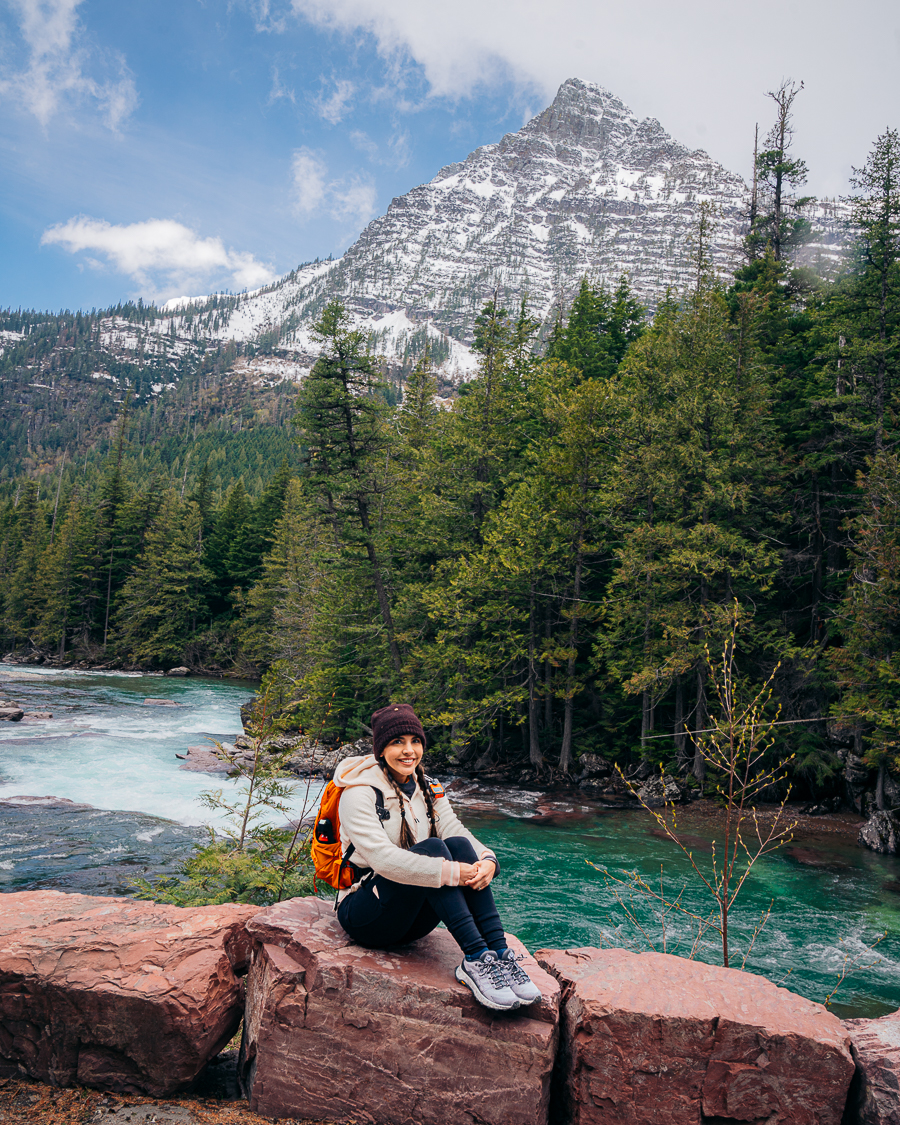
One of Glacier National Park’s biggest attractions is Going-to-the-Sun Road, a 50-mile road that connects West Glacier and East Glacier. This road has an elevation gain of around 6,466 feet – no wonder it’s called Going-to-the-Sun Road.
As it’s one of the most popular activities here, it would be wise to check the road conditions and whether or not you’ll need a vehicle registration. However, to avoid the hassle, you can always take the Going-to-the-Sun Road shuttle, which is available in summer and fall. This operates from the Apgar Visitor Center to the St. Mary Visitor Center and has many stops at trailheads, overlooks, and other points of interest.

Top tip: You could always try biking the Going-to-the-Sun Road for fantastic views of the mountains and some incredible memories.
Have Lunch in Saint Mary
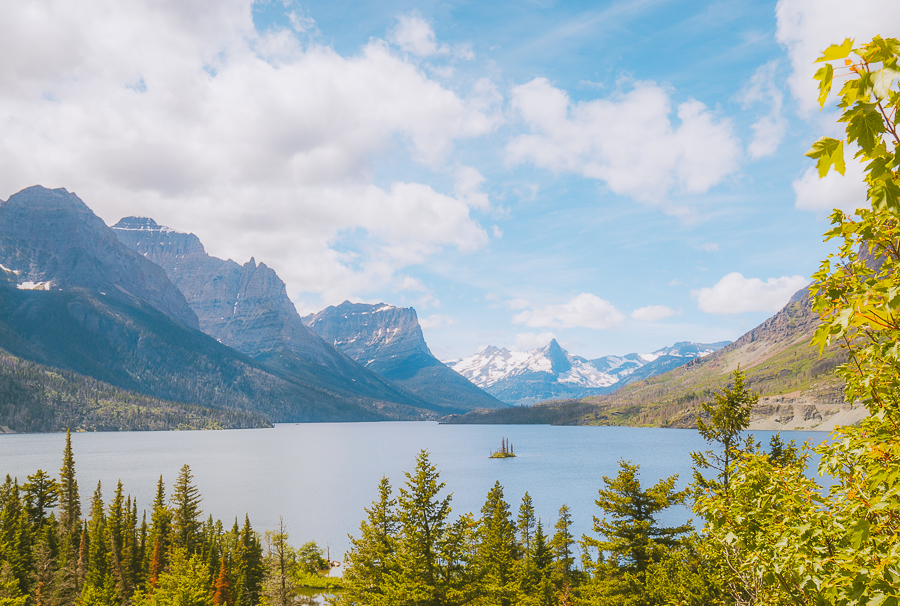
You’ll pass Saint Mary Lake before continuing on to St. Mary, which is a terrific place to have breakfast or lunch – depending on how early you get up. It’s just outside Glacier National Park, so it’s the perfect spot to refuel. For delectable sandwiches and great coffee, head to Glacier Perk Café.
Next up, take some snapshots of Wild Goose Island and St. Mary Lake. Additionally, you can hike to St. Mary Falls before heading back to West Glacier. The entire drive should take around 2 hours, so you’ve still got tons of time to explore.
Hike Avalanche Lake Trail
- Distance: 4.6 miles
- Elevation Gain: 500 ft
- Difficulty: Moderate
- Trail Guide: Link
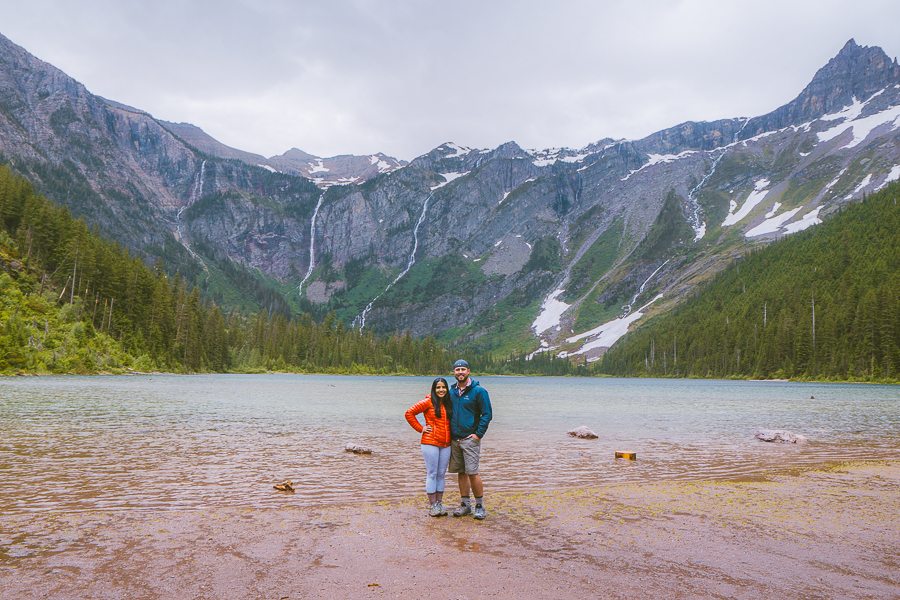
West Glacier is one of the best places to go hiking in Glacier National Park, whether that’s along the Going-to-the-Sun Road or Logan Pass. So, after enjoying a scenic drive and a delicious lunch, this trek will get your legs stretched and your eyes mesmerized.
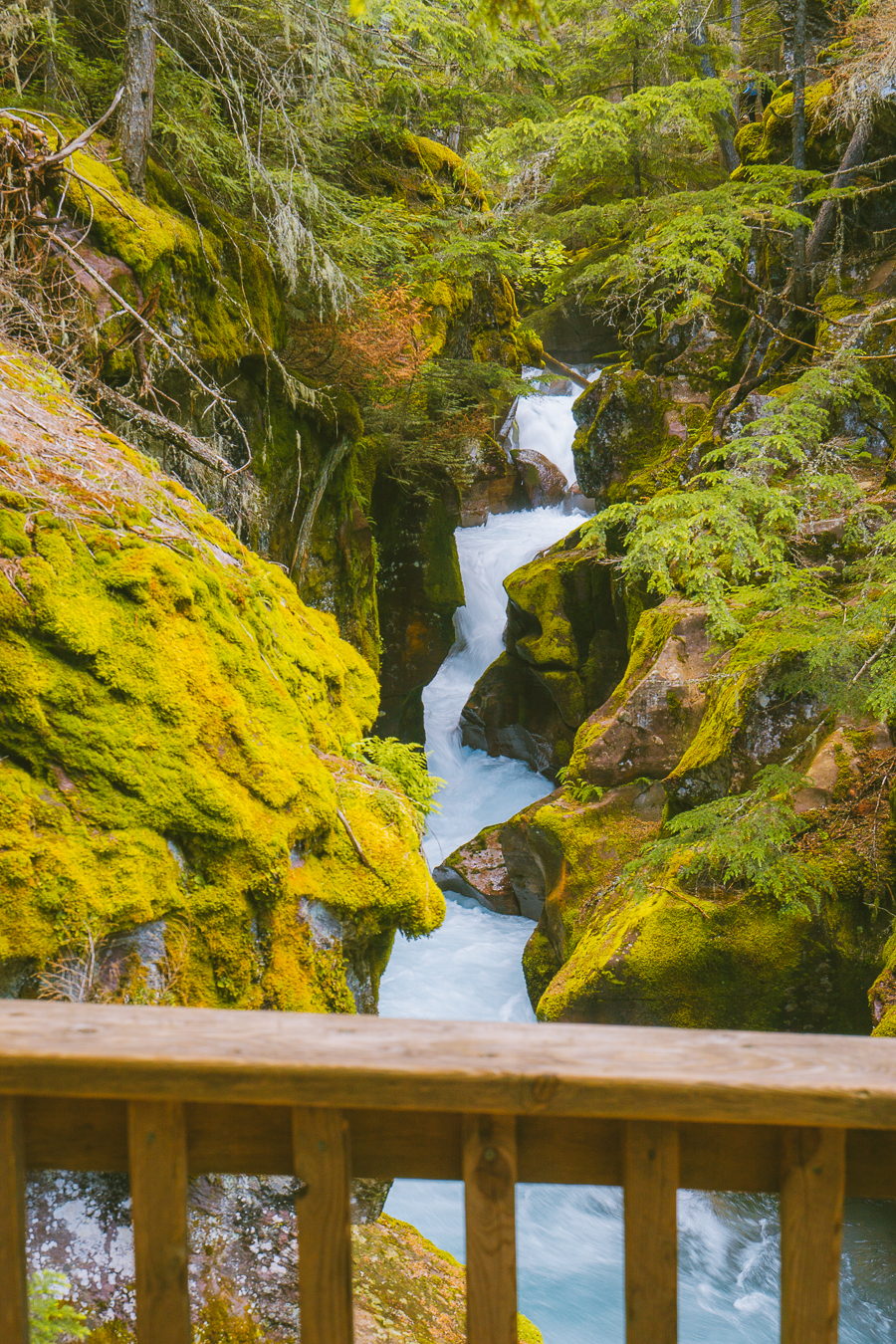
The first part of the hike involves following along the Trail of the Cedars, which is a more frequented route, but when you reach the Avalanche Creek trail, the foot traffic will reduce.
It’s a brilliant journey through the forest on your way to Avalanche Lake – which is totally picturesque with the majestic mountains as its backdrop. It’s the perfect spot to capture a memory of your trip to the reserve, whether you’re traveling with family or just your partner.
Download my free Outdoor Photography Guide
Explore the Lake McDonald Valley
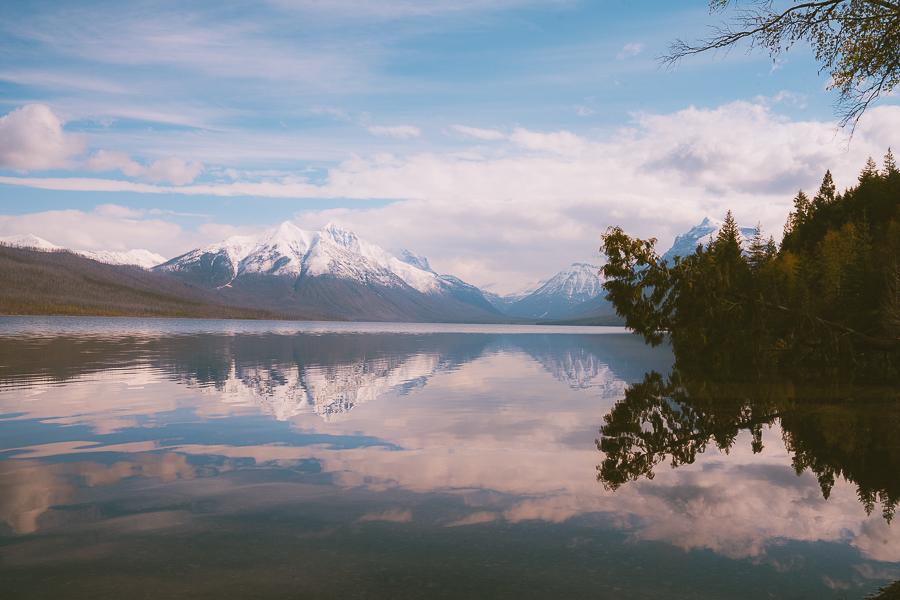
After hiking the Avalanche Lake Trail, you should head to Lake McDonald Valley, where you can appreciate Lake McDonald – Glacier National Park’s largest lake. At over ten miles long and around 500 feet deep, this body of water is a result of glacial carving, and wow, it’s spectacular.
Along its shore sits the grand Lake McDonald Lodge, which is a historic hunting lodge built in 1913. You can still stay in this Swiss chalet-style building from May until June – as a rustic way to appreciate the park.
Some other highlights of Lake McDonald Valley include guided horseback riding, hiking, Red Bus tours, and paddle boarding or kayaking on Lake McDonald.
After all this adventuring in West Glacier, head back for some essential Z’s. You’ll need loads of energy for a jam-packed second day.
Day 2: Many Glacier Boat Tour and Grinnell Glacier Hike
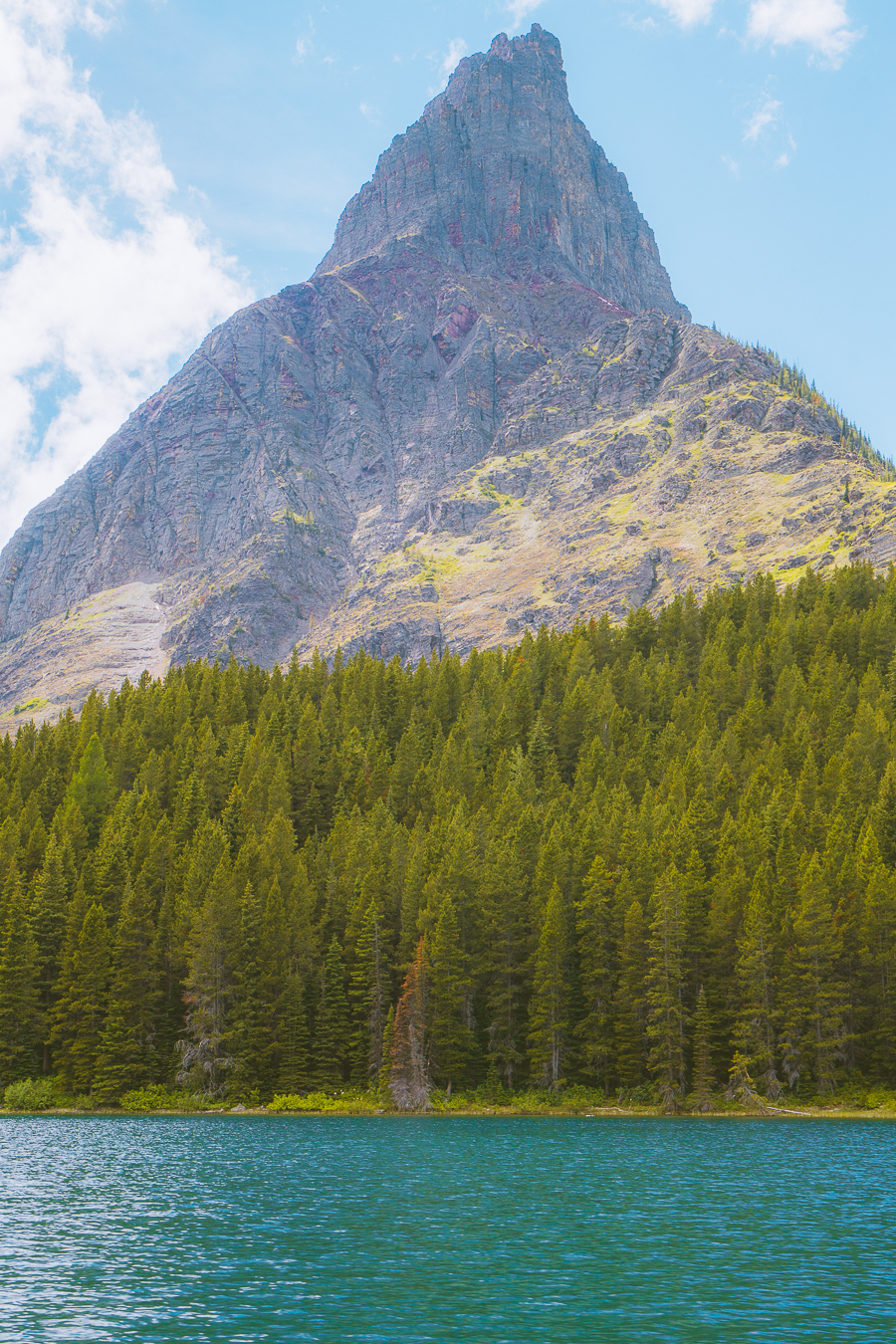
Day 2 involves exploring the Many Glacier Valley, including Grinnell Glacier, Swiftcurrent Lake, and Lake Josephine. You’ll get to Many Glacier from the east side of Glacier National Park, so it’s best to stay in either Many Glacier or St. Mary.
There are tons of things to do in the valley, whether that’s relaxing on a Many Glacier boat tour or hiking one of its trails. Let’s jump into it!
Explore the Many Glacier Hotel
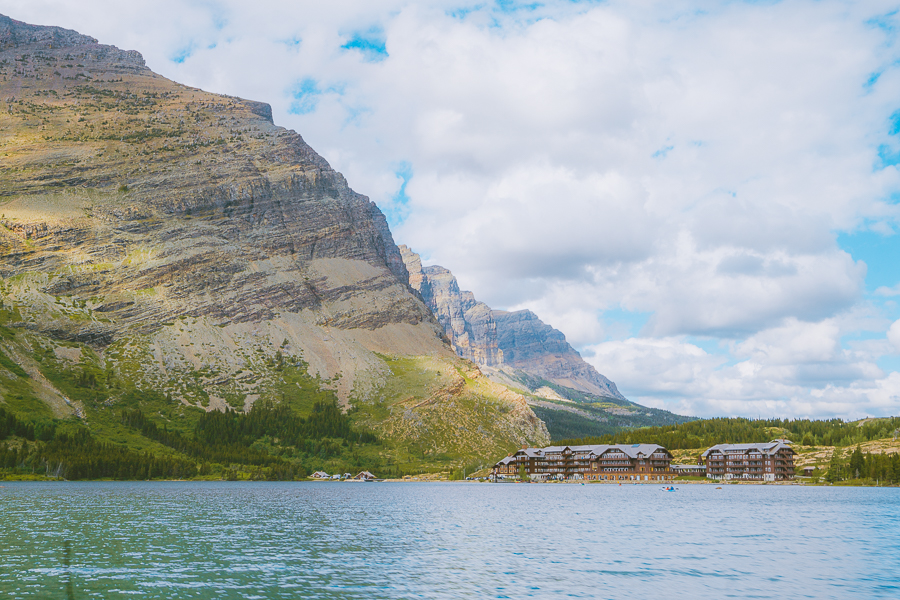
Start off Day 2 of your Glacier National Park itinerary with a visit to the Many Glacier Hotel. If you choose to stay there, you’ll appreciate the exquisite vistas it has over Swiftcurrent Lake and the luxurious rooms available.
That said if you just want to start your day with a bit of style with a warm meal and some trinket shopping, visit the Ptarmigan Dining Room or the hotel’s gift shop.
Go on a Many Glacier Boat Tour
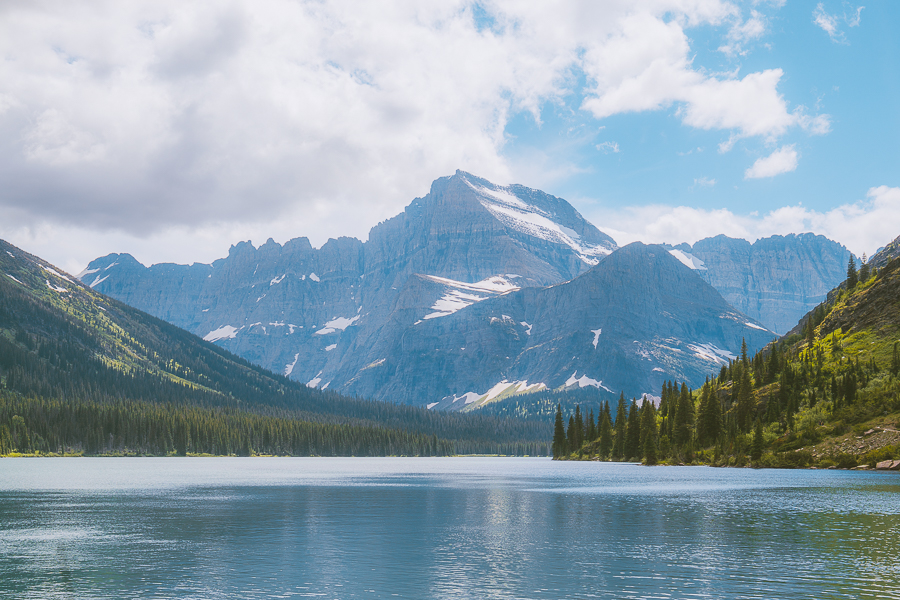
Next up, a top attraction in Many Glacier is to do a boat tour of Swiftcurrent Lake and Lake Josephine. Glacier Park Boat Co. offers tours from 8:30 am until 4:30 pm, from mid-June until mid-September, and are a fantastic way to experience the area.
This is a terrific option to take in incredible views, plus your guides will provide you with interesting facts. You’ll stop at the edge of Swiftcurrent Lake, disembark, and walk for a short 0.2 miles until you reach Lake Josephine’s shores.
What’s great is you can ask your guides to let you disembark for the Grinnell Glacier Trail or for a hike to Grinnell Lake. This detour means you’ll only need to hike 1.1 miles to Grinnell Lake and 3.6 miles (one way) to Grinnell Glacier.
Hike up the Grinnell Glacier Trail
- Distance: 10 miles
- Elevation Gain: 1,600 ft
- Difficulty: Hard
- Trail Guide: Link
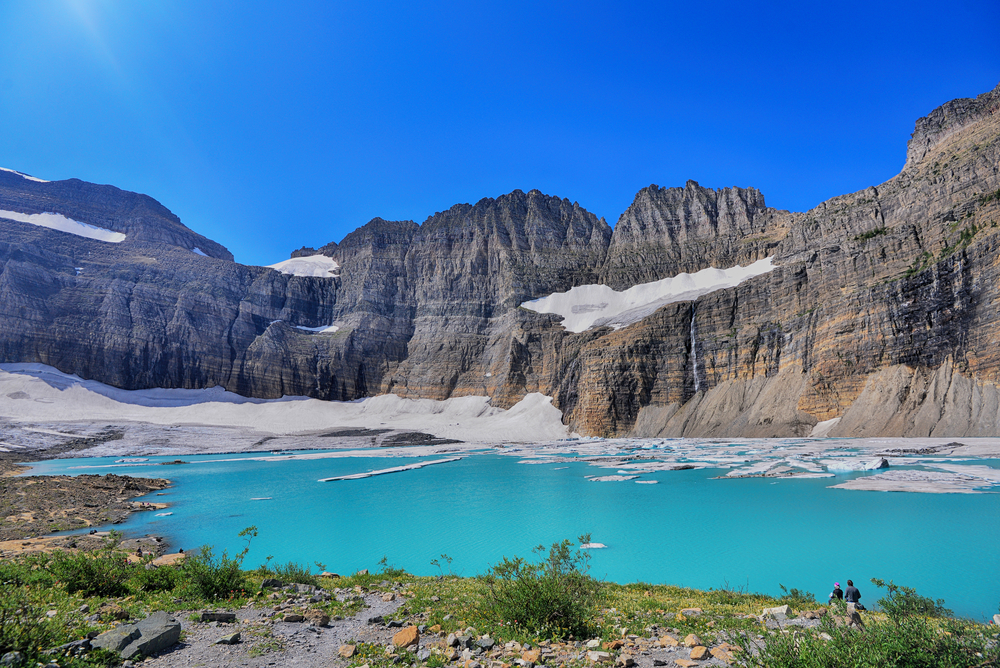
Provided you take the detour by using a boat ride, the hike to Grinnell Glacier will be a bit easier. Otherwise, you’ll pass by three lakes (Grinnell Lake, Swiftcurrent Lake, and Lake Josephine), Grinnell Falls, and vibrant wildflower meadows.
Yeah, this hike is packed with mesmerizing scenery, but that’s not even the highlight. As the elevation gains, you’ll begin to see the breathtaking sight of the glacier itself. This icy sight is so spectacular it’s no wonder that this trail is such a popular option for hiking enthusiasts.
You’ll end off the hike by heading back the same way, as it’s an out-and-back trail. Just remember to pack enough water, sunscreen, and, most importantly, bug spray – as mosquitos love it here too.
Hike to Iceberg Lake
- Distance: 9.3 miles
- Elevation Gain: 1,200 ft
- Difficulty: Hard
- Trail Guide: Link
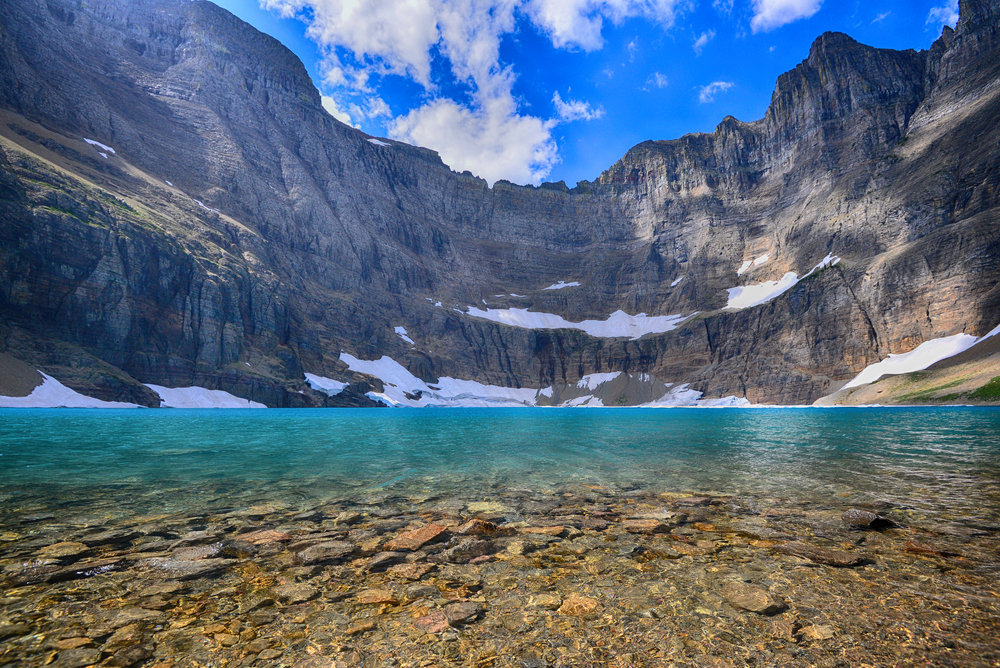
Still got energy for another activity in Many Glacier? Then, the hike up to Iceberg Lake is a great option. It’s definitely not the easiest trail to do, but you’ll be rewarded with fantastic views once you get to the top.
The first section of the trek involves a steep incline as you walk up the Ptarmigan Trail for 2.6 miles. The next 2 miles are a bit easier as you reach a more level path until you arrive at the stunning Iceberg Lake.
Now, you can take a bit of a breather and appreciate the view that you worked for with the lake’s azure waters. It’s also the perfect opportunity to have a snack and refill your water bottle.
You’ll end off this out-and-back hike with a drop in elevation, but make sure to take in the vistas of Ptarmigan Falls and alpine lakes.

Top tip: When doing the Iceberg Lake hiking trail, it’s highly recommended that you bring bear spray. This trail has a high incidence of bear sightings, especially in the fall.
Finish Day 2 of your Glacier itinerary by returning to your hotel to refuel and refresh yourself for more Glacier National Park exploring on your final day.
Day 3: Hike Hidden Lake Overlook & Highline Trail
Day 3 involves some of the best ways to see Glacier National Park, and that’s with some more hiking. Well, and checking out the Logan Pass Visitor Center.
Trek up Highline Trail
- Distance: 14.9 miles
- Elevation Gain: 2,621 ft
- Difficulty: Hard
- Trail Guide: Link
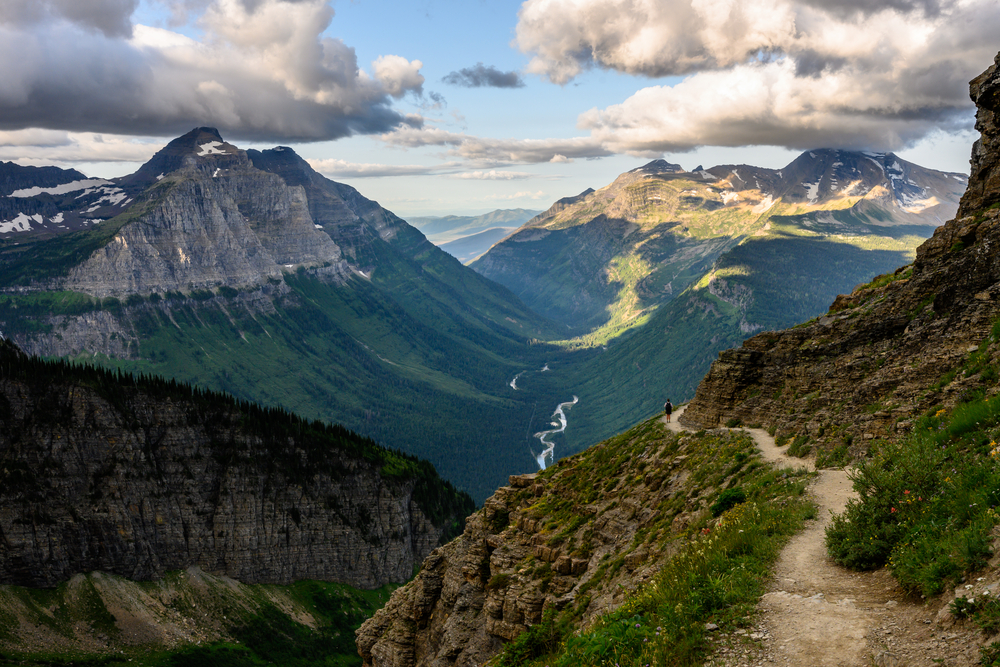
The Highline Trail is a must-do, and for a good reason. It’s got some of the most breathtaking views Northern Montana has to offer, plus steep inclines, drop-offs and a rocky cliffside.
With that all said, the Highline Trail hike is definitely one of Glacier National Park’s more difficult trails, and it’s one-way, so be aware of that before starting. You’ll start from the Logan Pass Visitor Center, and a magical time to do this is at sunrise as an ideal day starter.
Just think of all the incredible photos you could get as the sun rises. To get those gorgeous views, start this hike in the early morning at around 6 am. Along the route, you’ll pass the Grinnell Glacier Overlook, views of Mount Gould, and end off at the Granite Park Chalet and The Loop shuttle stop.
Here, you’ll be able to catch a free shuttle back to the visitor center and your car (if you drove). Just make sure to check out the operating times of the bus and whether or not the Going-to-the-Sun road is open or not.
Visit the Logan Pass Visitor Center
If you’re interested in the history and geography of Glacier National Park, then the Logan Pass Visitor Center is a terrific spot to learn more. It’s got various interactive displays, exquisite Mission 66 architecture, and tons of wildlife and wildflower viewing opportunities.
Plus, it’s at the highest point of the Going-to-the-Sun Road, so you know it’s got some amazing vistas. Additionally, if you’re looking for advice about where to spot mountain goats or need a Glacier National Park map, there are rangers who can help you out.
Do the Hidden Lake Overlook Hike
- Distance: 2.8 miles
- Elevation Gain: 460 ft
- Difficulty: Moderate
- Trail Guide: Link
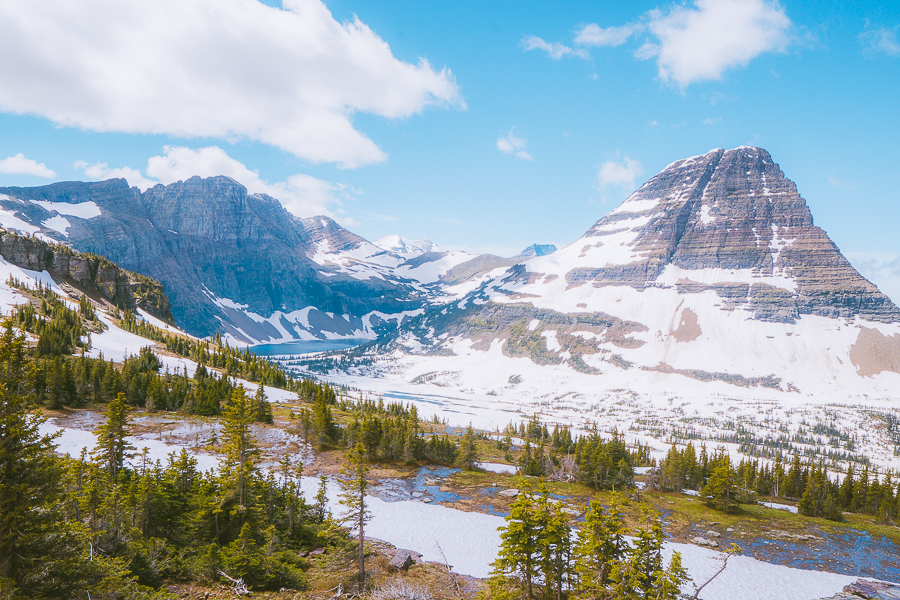
Just take a few steps from the Logan Pass Visitor Center, and you’ll be at the start of the Hidden Lake Trail, a moderate hike to do after lunch.
Hiking Hidden Lake Overlook is not too challenging, as you’ll start with a gradual elevation gain and some paved paths. At around 0.7 miles into the Hidden Lake Trail, you’ll experience the steepest part of the journey, but after this, it’s easy breezy.
You’ll reach the halfway point at around 1.3 miles at the Hidden Lake Overlook. With the gorgeous views of Clements Mountain, Reynolds Mountain, and Hidden Lake, it’s a great place to appreciate Glacier’s incredible scenery.
You’ll head back down the same way as you came, but make sure to look out for mountain goats, bighorn sheep, and marmots, as they’re known to inhabit this area.

Top tip: This is also the perfect hike to snap some photos for your Insta feed or holiday cards, so bring your best camera gear with you.
Check Out Two Medicine Lake
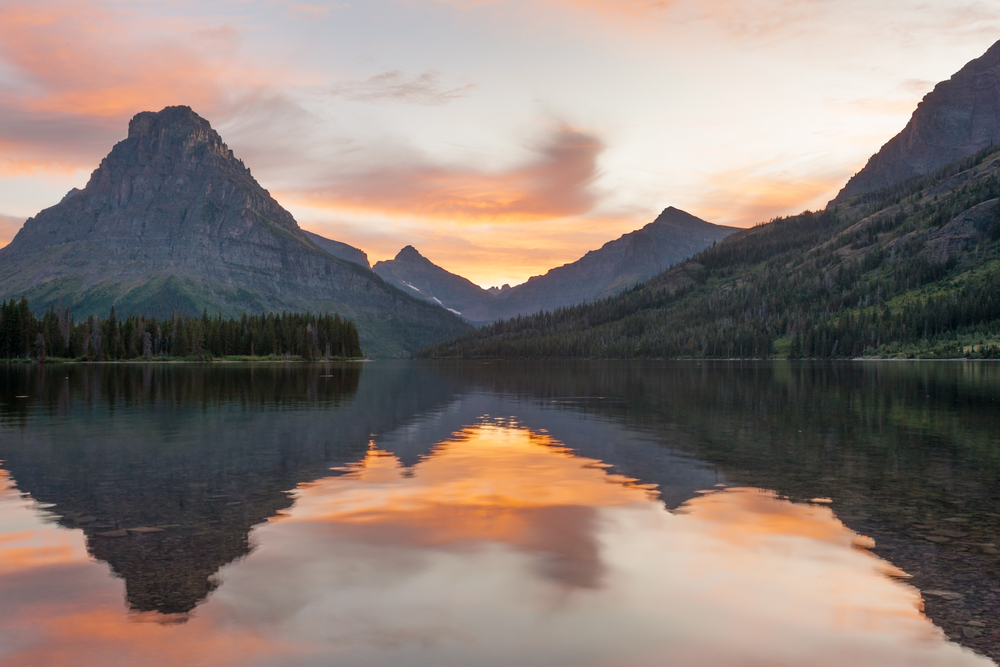
Lastly, to end off your 3-day Glacier National Park trip itinerary in style, visit the Two Medicine Lake. Located in the southeast corner of the reserve, it’s one of the lesser visited spots in the park – however, it’s still mighty impressive.
It’s roughly an hour and 20 minutes from the Hidden Lake Trailhead, so appreciate the views of Rising Sun, St. Mary Lake, and the park’s east side. Once you get to Two Medicine Lake, you’ll find the backdrop of Sinopah Mountain makes the perfect place for more photo-taking opportunities.
Additionally, you could enjoy a quick dip in the lake, take a hike up to the Twin Falls, or simply enjoy a picnic by Two Medicine’s shores.
Grab Your Free Car Camping Checklist! 🚗🌲
Ready to elevate your car camping game? Snag our essential checklist to ensure you’ve got everything you need for a stress-free, fun-filled adventure! Perfect for beginners and seasoned campers alike. Download now and hit the road prepared! 🌟🎒
If You Don’t Have Time for 3 Days in Glacier National Park
While this 3-day itinerary of Glacier National Park covers some fantastic activities, you may not have enough time to spend 72 hours there. With that in mind, here is a guide to what to do if you only have 24 to 48 hours in the park.
Day 1: Drive Along Going-to-the-Sun Road & Hike to Avalanche Lake
If you have limited time here, plan a trip to Glacier National Park that visits West Glacier, which is where some of the nature reserve’s highlights are. You’ll start your trip by entering the park at its west entrance near the Apgar Visitor Center. Here, you can either stop to get some information from rangers or take the free shuttle along the Going-to-the-Sun Road (if you haven’t got a vehicle reservation).
Next, you’ll drive to the Trail of the Cedars Trailhead, where there is a parking lot, public bathrooms, and water refilling stations. This is where you’ll start the Avalanche Lake hike, which should take around 2 to 3 hours. It’s highly recommended that you start this hike in the early morning – to avoid crowds and to save time for some other activities.
Continue your drive along Going-to-the-Sun Road, where you can stop along the way at various viewpoints, such as Bird Woman Falls Overlook, Triple Arches Bridge, Logan Pass Visitor Center, and Wild Goose Island Overlook.
You’ll end off Day 1 near St Mary Lake in Saint Mary, where you can either stay at a campground or one of its hotels.
Day 2: Many Glacier Boat Tour and Grinnell Lake Trail
You’ll start Day 2 at the Many Glacier Hotel, where you can have breakfast in the Ptarmigan Dining Room. Next up, hop on a Many Glacier boat tour, where you’ll get to glide across Swiftcurrent Lake and Lake Josephine. This is a spectacular way to see some of the nearby peaks, such as Mount Grinnell and Mount Gould, and to learn more about the geology and history of the Many Glacier area.
You can then ask your guides to drop you off at the edge of Lake Josephine, which is where you’ll start the hike to Grinnell Lake. It’s a 4.6-mile out-and-back trail from this point, and it’s a stunning way to experience this part of the park. This hike should take anywhere from 1 to 2 hours to complete, as it’s not too challenging.
Optionally, if you have a bit more time, you can add to this day by joining a Red Bus Tour from Many Glacier Hotel. These happen from late June until mid-September and are anywhere from 6 to 8 hours long. This is a comprehensive and simple way to explore the park.
Where to Stay in Glacier National Park
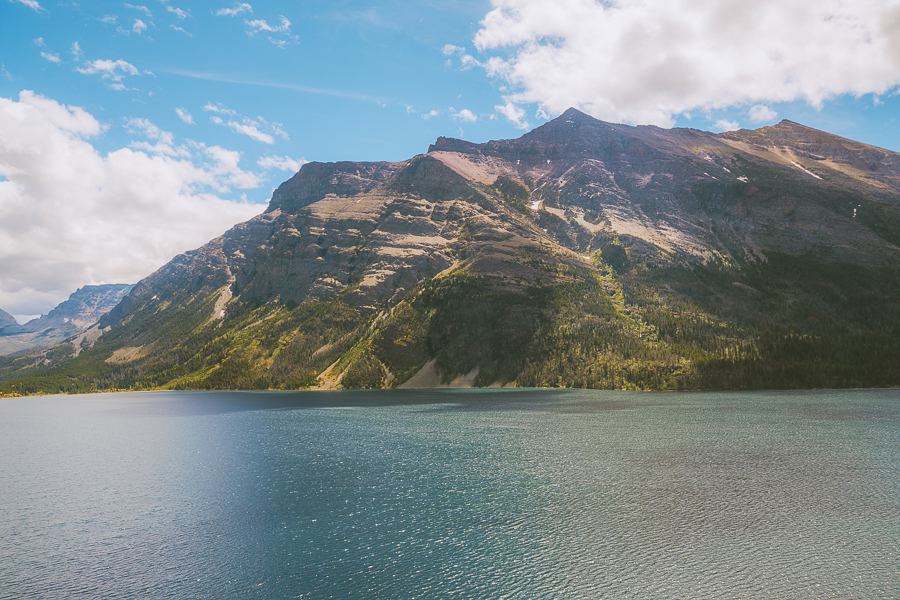
Wondering where to stay in Glacier? There are a variety of hotels and inns in the hotel, but it’s highly recommended that you book your rooms in advance to avoid disappointment. Below are some top options for every budget.
Budget | Swiftcurrent Motor Inn
Swiftcurrent Motor Inn is the ideal option for hiking enthusiasts who are looking to get the most out of their Glacier trip but still want the comfort of a bed. You’ll get pristine rooms for a great price, with free Wi-Fi, heating, and comfy bedding.
What’s more, there is a restaurant and a gift store, and you’re close to Iceberg Lake, the Ptarmigan Tunnel, and Swiftcurrent Pass. >>>Check Availability
Mid-range | Lake McDonald Lodge
If you want to experience Northern Montana’s wilderness in a less rustic environment, consider staying at Lake McDonald Lodge. This historic lodge was built in 1912, but it’s certainly not outdated, with recently renovated rooms, two on-site restaurants, and free Wi-Fi.
Plus, with stunning views overlooking Lake McDonald and its picturesque surroundings, you won’t mind the technology detox of not having a TV or air conditioning. >>>Check Availability
Luxury | Many Glacier Hotel
If you’re looking for the most luxurious option in Glacier National Park, Many Glacier Hotel is the spot for you. That’s because it’s located in the “Switzerland of North America ”, aka the northeastern glacier area of Glacier National Park.
What’s more, with its Alpine-style architecture, its grand lakeside dining room, over 200 guest rooms, and king or queen-sized beds – it’s as deluxe as it comes for a national park hotel. Whether you’re enjoying the views of Swiftcurrent Lake from your room or Interlaken Lounge, you’ll be having a great time. >>>Check Availability
Camping
Last but certainly not least, trips to Glacier National Park can also be enjoyed with a stay in one of its 13 campgrounds. This could make it feel overwhelming to choose one, but here are the top picks for each area.
West Glacier: Apgar Campground – as the park’s largest campground, this has over 194 sites for tents and RVs. Additionally, it has food storage lockers, a camp store, picnic tables, and fire rings. >>>Check Availability
Many Glacier: St. Mary Campground – This is Many Glacier’s biggest campground, with over 148 sites. It has hot showers, picnic tables, fire rings, and food storage lockers and is close to the St. Mary Visitor Center. >>>Check Availability
Going-to-the-Sun Road: Rising Sun Campground – Located along St. Mary Lake, this campground is known for having stunning views of Red Eagle Mountain. What’s more, it’s also a great starting point for day hikes on the Logan Pass. It has 84 first-come, first-serve sites with a camp store, food storage lockers, coin-operated showers, and picnic tables. >>>Check Availability
East Glacier: Two Medicine Campground – This campground has 100 sites with food storage lockers and a camp store and remains open until late October. It’s close to many day hikes, including Running Eagle Falls. >>>Check Availability
Read More: Where to Stay in Glacier National Park | 14 Best Hotels & Lodges
Glacier National Park Itinerary | FAQs
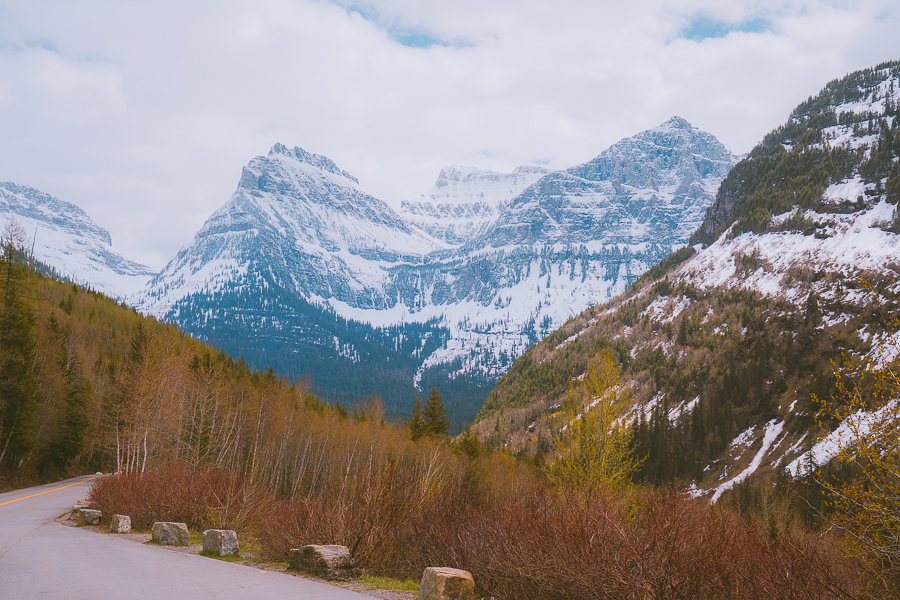
Traveling to Glacier National Park and still have some burning questions? Here are answers to some that are most commonly asked by those interested in visiting.
How Many Days in Glacier National Park is Enough?
Glacier National Park trips are best when spending at least 3 days in this natural beauty. However, that’s only the minimum. The optimal amount of time for a Glacier National Park itinerary is 5 days, as you’ll be able to fit in enough long hikes, scenic drives, and wildlife spotting opportunities.
Which Is Better Glacier or Yellowstone National Park?
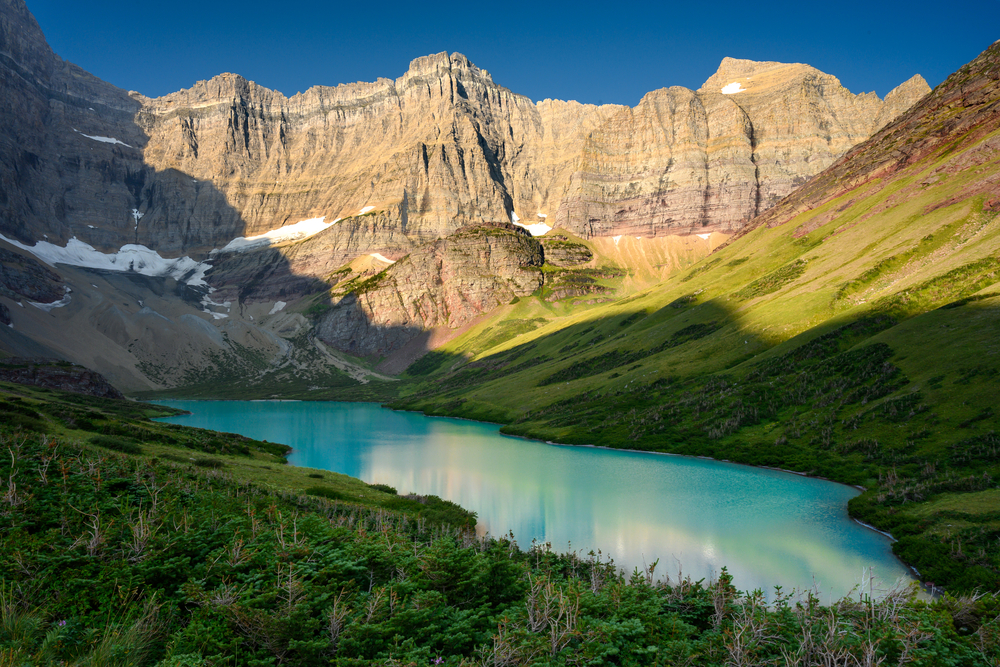
As two of the US’s most visited national parks, Glacier and Yellowstone are often pitted against each other for which is better. If you’re looking for the best hiking opportunities, visit Glacier National Park. However, if you’re interested in seeing a variety of different landscapes, like geysers, hot springs, and lakes, visit Yellowstone.
What Are the Best Months for a Vacation to Glacier National Park?
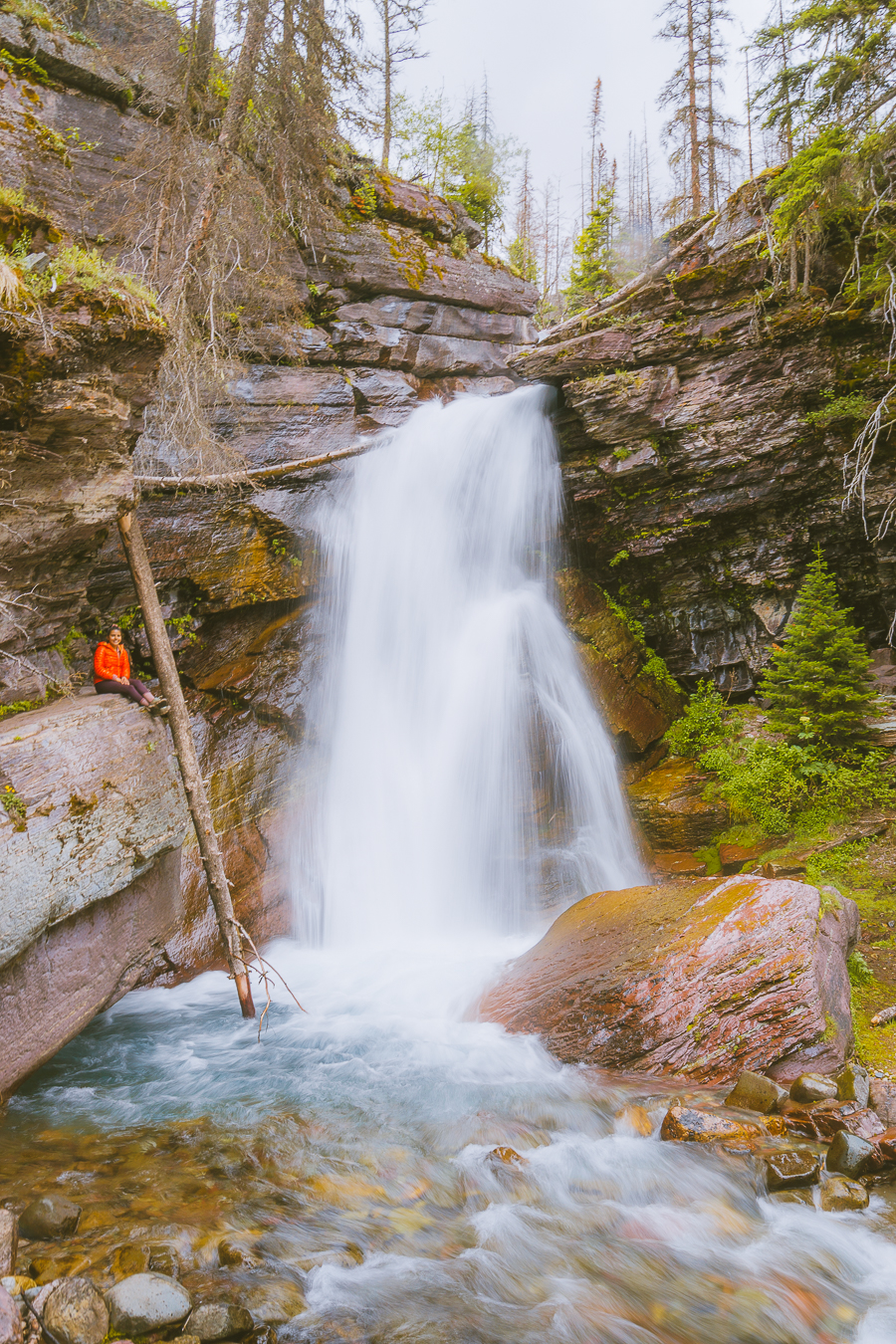
Glacier National Park in July and August is when it’s at its best. That’s because Going-to-the-Sun Road is open, the weather is fantastic, and there are loads of summer activities.
That said, it is the busiest time for Glacier National Park vacations and, therefore, also the most expensive.
How Far to Plan a Trip to Glacier National Park in Advance?
You should plan an itinerary to Glacier National Park almost a year in advance, especially if you want to book accommodation inside the reserve. As one of America’s most visited national parks, it gets full fast.
Final Thoughts on Planning a Trip to Glacier National Park
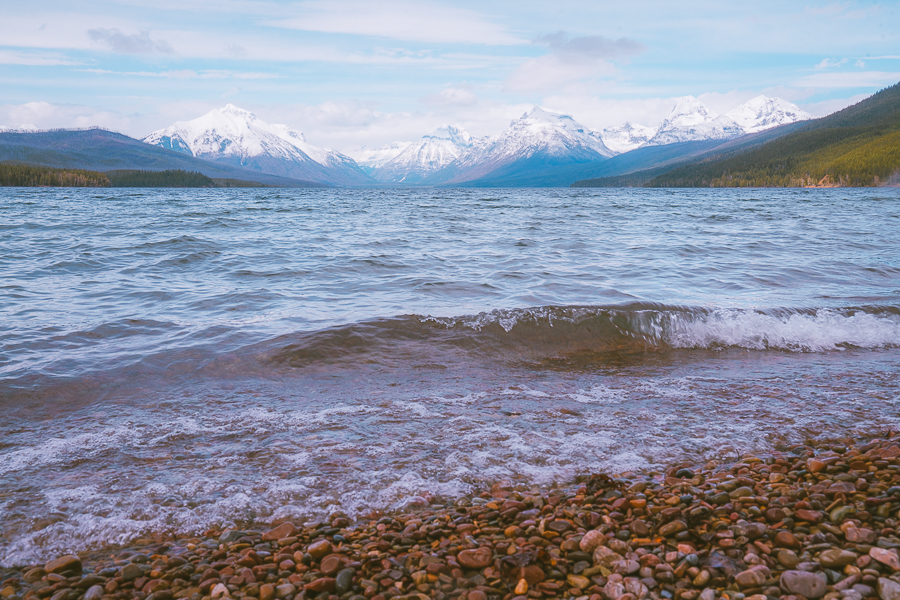
With its exceptional vistas, multitude of hikes, and icy glacial lakes, Glacier National Park is a terrific spot to visit in Northern Montana. Whether you’re visiting Glacier National Park in 3 days or even just 24 hours, there is so much you can do – and not just hiking.
This itinerary for Glacier National Park has covered all you need for a trip to this spectacular place, so all you need to do is book a trip here.

PS: If you’re a bit unfamiliar with hiking, check out these guides on wildlife safety tips and Leave No Trace principles.

